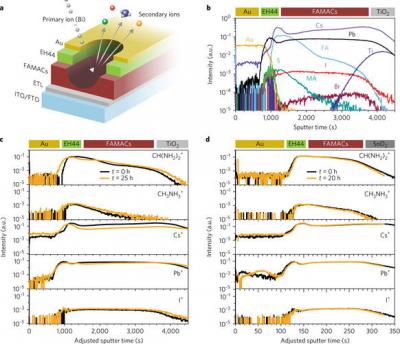Researchers at the U.S. Department of Energy's National Renewable Energy Laboratory (NREL) have reported the development of an environmentally-stable perovskite solar cell that reportedly maintained 94% of its starting efficiency after 1,000 hours of continuous use under ambient conditions.

'During testing, we intentionally stress the cells somewhat harder than real-world applications in an effort to speed up the aging,' says an involved researcher at NREL. 'A solar cell in the field only operates when the sun is out, typically. In this case, even after 1,000 straight hours of testing the cell was able to generate power the whole time.'
In traditional perovskite solar cells, the material is sandwiched between a transport material where a thin film of an organic molecule called spiro-OMeTAD is doped with lithium ions and an electron transport layer made of titanium dioxide (TiO2). However, this type of cell experiences an almost immediate 20% drop in efficiency and then steadily declines as it becomes more unstable.
NREL researchers theorized that replacing the layer of spiro-OMeTAD could help in preventing the drop in efficiency. The team took a new molecule, called EH44, which could replace spiro-OMeTAD because it repels water and doesn't contain lithium. The EH44 being used as the top layer resolved the later more gradual degradation but did not solve the initial fast decreased seen in the cell's efficiency.
Researchers then tried another approach by swapping the cell's bottom layer of TiO2 with tin oxide (SnO2). With both EH44 and SnO2 as replacements in the solar cell, the efficiency remained steady.
'This study reveals how to make the devices far more stable,' the team says. 'It shows us that each of the layers in the cell can play an important role in degradation, not just the active perovskite layer.'